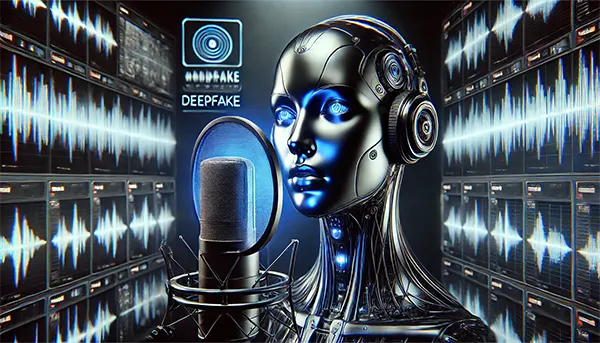
Is It Safe to Use Digital Voices in 2025? Deepfake, AI, and Privacy Threats
The rise of artificial intelligence has transformed the way we interact with technology, and one of the most controversial advancements is the use of digital voices. From AI-generated voice assistants to deepfake technology, synthetic speech has numerous applications, but it also raises serious concerns about privacy, security, and authenticity. As we enter 2025, it is crucial to examine the safety implications of using digital voices and assess the risks associated with AI-driven speech synthesis.
The Growing Role of AI in Digital Voice Technology
AI-powered digital voices are increasingly being used in various fields, including customer service, entertainment, and personal assistants. Tech giants like Google, Amazon, and Apple continue to refine their AI voice models, making them sound more human-like and natural. While these innovations improve user experiences, they also create potential risks.
One major concern is the ethical use of AI-generated voices. With the ability to mimic real human speech, there is a growing fear that malicious actors could exploit this technology for fraud, misinformation, or identity theft. Voice deepfakes, in particular, have been used to impersonate public figures, manipulate opinions, and even deceive financial institutions.
Moreover, AI-powered voice technology has blurred the lines between human and synthetic communication. As digital voices become more convincing, it is becoming increasingly difficult to distinguish between real and artificial speech. This has led to calls for stricter regulations and the development of watermarking techniques to verify the authenticity of AI-generated audio.
How Deepfake Technology Poses a Threat
Deepfake technology is one of the most concerning aspects of AI-driven voice synthesis. Using advanced machine learning algorithms, deepfake software can replicate a person’s voice with astonishing accuracy. This has already led to cases of cybercrime, including scams where criminals use AI-generated voices to impersonate executives and authorise fraudulent transactions.
The rapid improvement of deepfake voice technology means that even amateur users can create convincing audio for deceptive purposes. This raises significant security concerns, particularly for industries that rely on voice authentication, such as banking and government services. Without robust detection methods, deepfake voices could become a tool for sophisticated cyberattacks.
To counteract these threats, researchers are developing AI detection tools that analyse speech patterns and identify synthetic voices. However, as AI technology evolves, so do the methods used by bad actors, creating an ongoing battle between cybersecurity experts and cybercriminals.
Privacy Concerns and Ethical Implications
The widespread adoption of digital voice technology also presents major privacy challenges. Many AI voice assistants collect and process large amounts of user data to improve their functionality. This raises questions about how personal voice data is stored, shared, and potentially misused.
Voice recordings can be used to track user behaviour, preferences, and even emotions, leading to concerns about surveillance and data exploitation. Companies that develop AI voice systems must implement strict data protection measures to prevent unauthorised access and misuse of personal voice data.
Additionally, there is the issue of consent. Users may not always be aware that their voices are being recorded and analysed by AI systems. Governments and regulatory bodies are increasingly pushing for transparency in AI voice technology, demanding that companies disclose how they collect and use voice data.
Regulatory Measures and Ethical AI Development
To address the risks associated with AI-generated voices, policymakers are working on legal frameworks to regulate their use. Several countries have introduced laws targeting deepfake technology, requiring companies to label synthetic audio and implement authentication mechanisms.
Tech companies are also developing ethical AI guidelines to ensure that voice technology is used responsibly. Some firms are investing in watermarking techniques that embed unique identifiers in synthetic speech, making it easier to detect AI-generated voices.
Despite these efforts, challenges remain in enforcing regulations on a global scale. The rapid evolution of AI technology means that new threats continue to emerge, making it difficult for regulators to keep pace with advancements in digital voice synthesis.

The Future of Digital Voices: Risks and Benefits
While digital voices present undeniable risks, they also offer significant benefits. AI-generated voices are revolutionising accessibility, allowing people with speech impairments to communicate more effectively. They are also enhancing customer service by providing instant and personalised interactions.
Furthermore, digital voices are playing a crucial role in entertainment and content creation. From virtual assistants to AI-generated narrators, synthetic voices are reshaping how we consume media. However, ensuring the ethical use of this technology is essential to prevent misuse.
As we move forward, a balanced approach is necessary to harness the benefits of digital voices while mitigating potential risks. Continued advancements in AI detection, stricter regulations, and increased public awareness will be key to maintaining the integrity and security of voice-based technology.
Final Thoughts: Navigating the AI Voice Landscape
The use of AI-generated voices is here to stay, but its safety depends on how we regulate and manage this technology. While advancements in synthetic speech bring convenience and innovation, they also introduce unprecedented security and ethical challenges.
To ensure a safer future, stakeholders—including tech companies, governments, and cybersecurity experts—must work together to develop transparent policies and robust detection systems. Educating the public about the risks of AI-generated voices will also play a crucial role in preventing fraud and misinformation.
Ultimately, digital voices should be developed with accountability and ethical considerations in mind. By striking the right balance between innovation and security, we can embrace the benefits of AI-generated speech while protecting privacy and authenticity in the digital age.